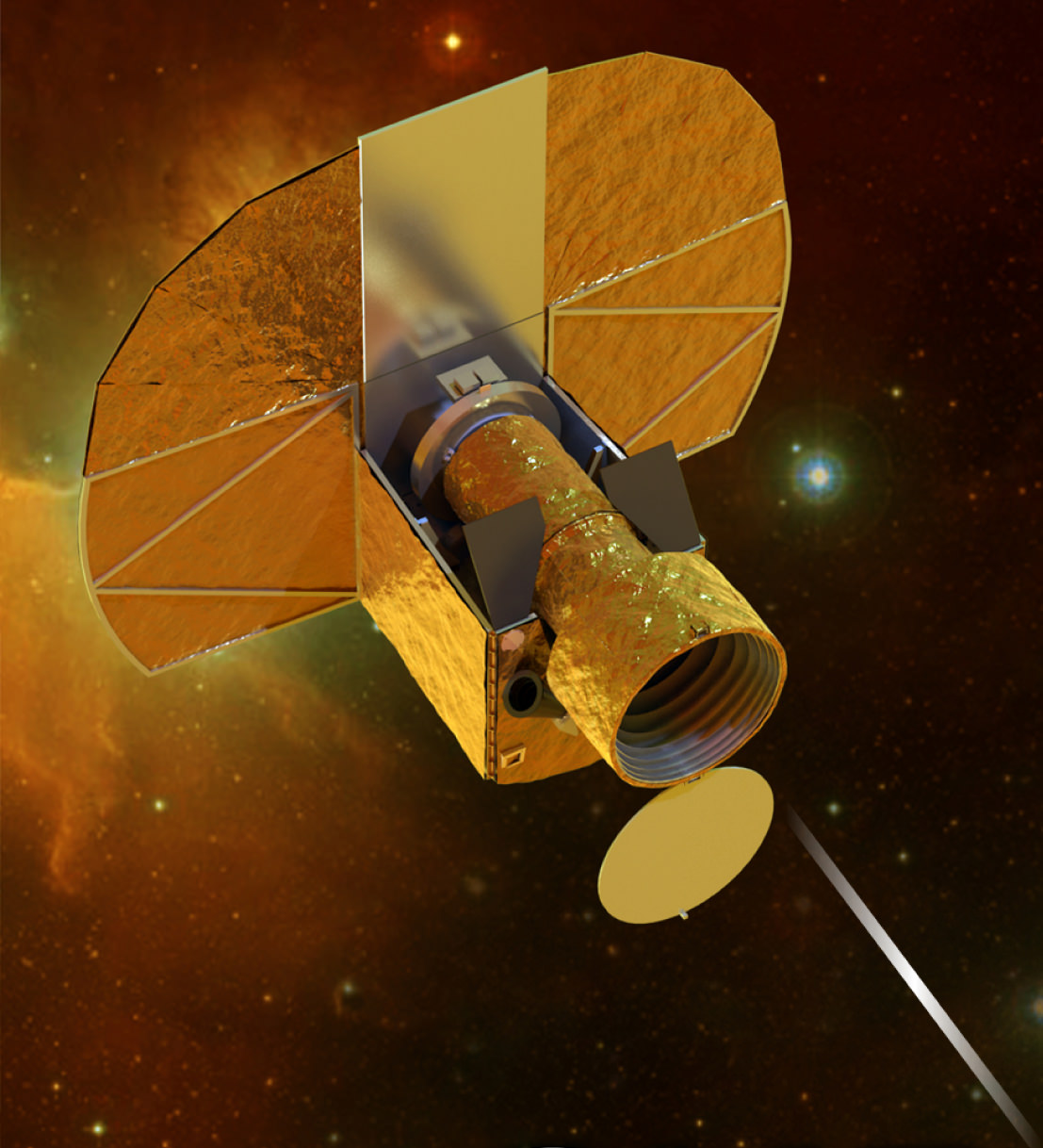Caption: Artist impression of Cheops. Credit: University of Bern
Big isn’t always better. This is certainly true at ESA’s new Science Programme. They are looking to low cost, small scale missions that can be rapidly developed, in order to offer greater flexibility in response to new ideas from the scientific community, to complement the broader Medium- and Large-class missions. Back in March ESA called for ideas for dedicated, quick-turnaround missions focusing on key issues in space science. From 26 proposals submitted, ESA has now approved a new mission to be launched in 2017. Though small in scale this mission is big on ambition: to search for nearby habitable planets.
Cheops stands for CHaracterising ExOPlanets Satellite. It has a planned mission lifetime of 3.5 years during which it will operate in a Sun-synchronous low-Earth orbit at an altitude of 800 km, free from distortion by Earth’s atmosphere. It will target nearby, bright stars already known to have planets orbiting around them.
By high-precision monitoring of the star’s brightness, Cheops will search for signs of a ‘transit’ as a planet passes across the star’s face, it will also be able to look for smaller planets, impossible to see using ground based telescopes, around those stars.
While NASA’s Kepler mission has confirmed 77 planets so far, with another 2,321 candidate planets, not one is close enough to Earth to be analysed in detail. Cheops on the other hand, will be able to take accurate measurements of the radius of the planet. For those planets with a known mass, this will reveal the planet’s density and provide an indication of the internal structure. It will help scientists understand the formation of planets from ‘super-Earths’, a few times the mass of the Earth, up to Neptune-sized worlds. It will also identify planets with significant atmospheres which can then be analysed for signs of life by ground-based telescopes, and the next generation of space telescopes now being built, such as the ground-based European Extremely Large Telescope and the NASA/ESA/CSA James Webb Space Telescope.
“By concentrating on specific known exoplanet host stars, Cheops will enable scientists to conduct comparative studies of planets down to the mass of Earth with a precision that simply cannot be achieved from the ground,” said Professor Alvaro Giménez-Cañete, ESA Director of Science and Robotic Exploration.
The plan is for Cheops to be the first of a series of similar small missions, that can be rapidly developed at low cost to investigate new scientific ideas quickly. Cheops will be developed as a partnership between ESA and Switzerland, with a number of other ESA Member States delivering substantial contributions.
Find out more about Cheops here


What is small about this mission? Cost? If it can do more than Kepler, how can it be a “small” mission?
I’ve heard cost of no more than 50 million Euros. It is part of ESA’s strategy to invest in more of these, low cost, single purpose missions that can be developed quickly to respond to new scientific ideas & research. The reason it can do more than Kepler, which looks fixedly at a large area of sky, is that Cheops will be able to specifically target nearby stars & therefore analyse each of them better
It doesn’t do more than Kepler but rather something different: Kepler is constantly monitoring nearly 150,000 stars for transits. That’s a tough and unprecedented mission.
Cheops, meanwhile, is picking off the “low-hanging fruit” of planetary discovery by looking at the most easily targetted transits in order to gather more information about those planetary systems. You might say that it’s doing the spacecraft equivalent of standing on the shoulders of giants.
More accurately, I’d say it’s looking at the trees whilste Kepler studies the entire forest…
If you want to use that analogy, Kepler is looking at one chunk of the forest some distance away while Cheops is looking at some of the nearest trees that have already been determined to be particularly interesting.
Now that we have found these planets it is time to study them in detail. I’d be curious to see close up data on the Gliese 581 and 688 (if I remember the numbers) planets.
LC
You probably meant Gliese 667 with the latter.
Aye, the neighbor of the beast… lol!
Calling All Space Explorers:
There’s an incredibly ambitious project to make the most scientifically accurate big budget scifi film ever made to revive and accelerate the advancement of space exploration. The film will be written and made by world-renowned scientists, A-list film personalities and the public.
Meet us here:
https://www.facebook.com/exocivilian
Interesting concept. Indeed, quite ambitious. I’ll follow the bus…